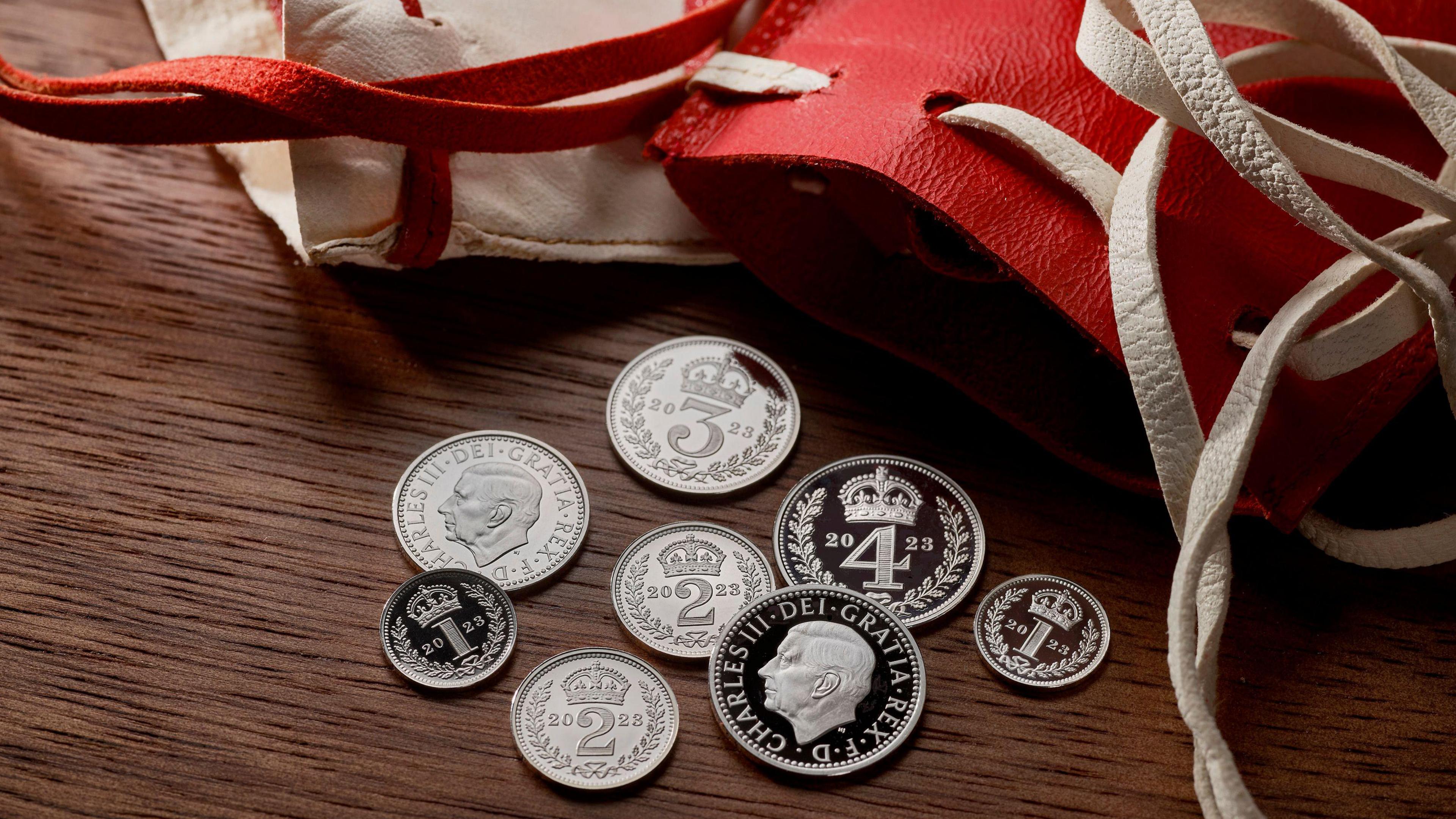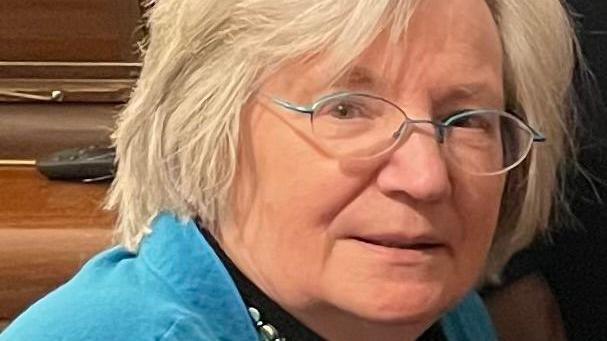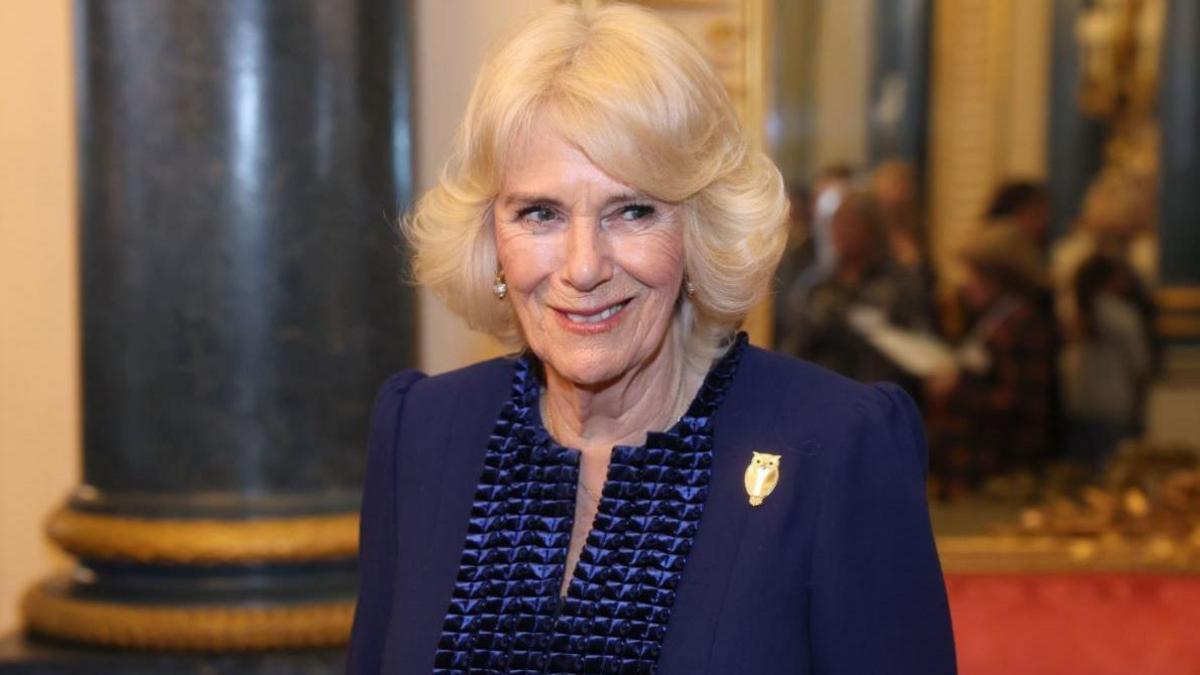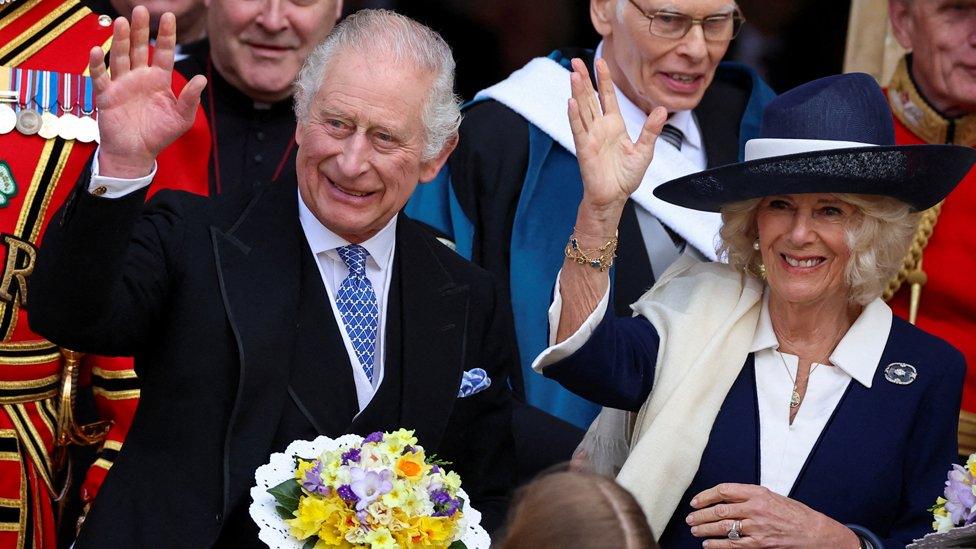Couple's Maundy money honour 'very unusual'

Geoff and Jean Almond are experiencing a rare honour for them both having become Maundy recipients
- Published
A woman paralysed by multiple sclerosis who has been chosen to receive Maundy money from King Charles III joins her husband in becoming a recipient in an "unusual and great honour".
Jean Almond, 73, from Eccleston, St Helens, will be among the 152 recipients at the ceremony in Durham Cathedral.
Her husband Geoff, 70, received his when the King deputised for his mother Queen Elizabeth II in 2022.
A royal spokeswoman said the Palace had no record of any similar instance in recent years.
Royal Maundy takes place each year on the Thursday before Easter Sunday.
It is a special service in which the King expresses his gratitude to those who serve and volunteer in their communities.
The ceremony dates back centuries when the sovereign would distribute alms to the poor.
Mrs Almond said it was "a challenge" travelling from St Helens to Durham and her debilitating illness meant she would not receive the symbolic money like others at the service.
"I can't even take the money from the King, I will just have to cup my hands like a beggar," she said.
But she and her husband said they "can't believe" they had both been chosen for the honour.

The last Maundy service at Durham Cathedral was in 1967
Three years ago, Mr Almond, who is a retired headteacher and a lay canon with Liverpool Anglican Diocese, received his Maundy money at St George's Chapel, Windsor.
"I was very moved when I received my money and I think it will be even more so this time round when my wife receives her money," he said.
"We can't believe it - this is a great honour and very unusual for a married couple to each receive the Maundy."
During the service, the King, whose first Maundy Service as monarch was at York Minister in 2023, will present specially-minted Royal Maundy money to 76 men and 76 women - with the 76 signifying his own age.
Last year, Queen Camilla distributed the Royal Maundy at Worcester Cathedral as the King was being treated for cancer.
What is Maundy Money?
The Royal Maundy ceremony drew inspiration from Jesus Christ's commandment given after washing his disciples' feet at The Last Supper.
The commandment or in Latin "mandatum" - Maundy is the Anglicised shorter form - which appears in the Biblical book of John was "Love one another as I have loved you".
The ceremony can be traced back in England to the 13th Century, with the first recorded Royal Distribution in Knaresborough, North Yorkshire, by King John in 1210.
From the 15th Century, the number of recipients has been related to the years of the sovereign's life.
Early in her reign, Queen Elizabeth II decided Maundy money should not just be distributed to the people of London and began travelling to various cathedrals or abbeys.

The red purse symbolises the monarch's gifts of food and clothing
Each recipient of Maundy money is given two small leather purses by the King, one red and one white.
The red contains a small amount of ordinary coinage which symbolises the sovereign's gift for food and clothing, while the white purse contains Maundy coins up to the value of the monarch's age (which this year is 76p).
The coins are legal tender, but recipients normally prefer to retain them as a keepsake.
This year, the red purse contains a £5 coin commemorating Queen Elizabeth The Queen Mother and a 50p coin which features stories of the Second World War.
Get in touch
Tell us which stories we should cover on Merseyside
Listen to the best of BBC Radio Merseyside on Sounds and follow BBC Merseyside on Facebook, external, X, external, and Instagram, external and watch BBC North West Tonight on BBC iPlayer. You can also send story ideas via Whatsapp to 0808 100 2230.
Related topics
- Published16 April

- Published27 March 2024

- Published5 March 2024

- Published6 April 2023
